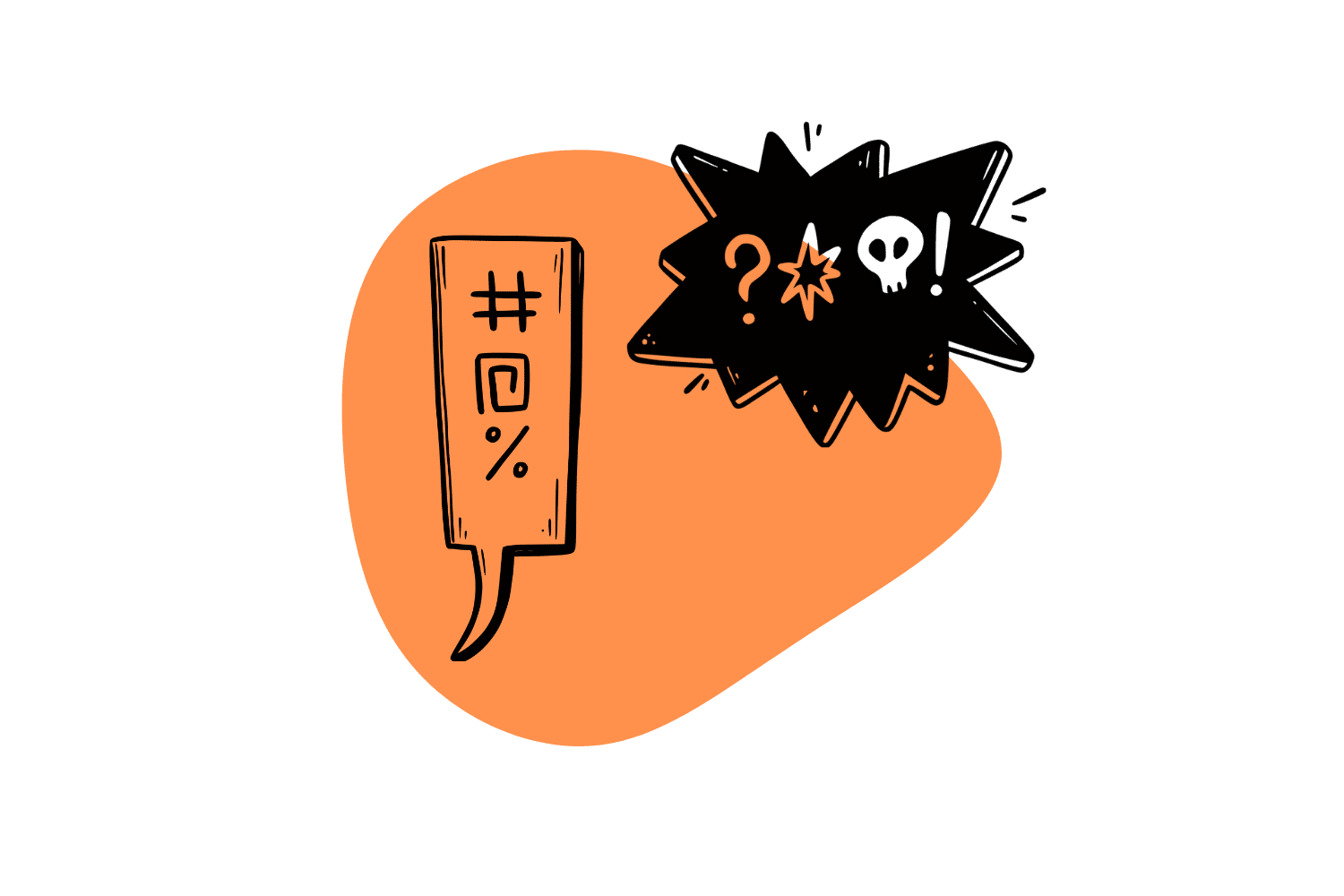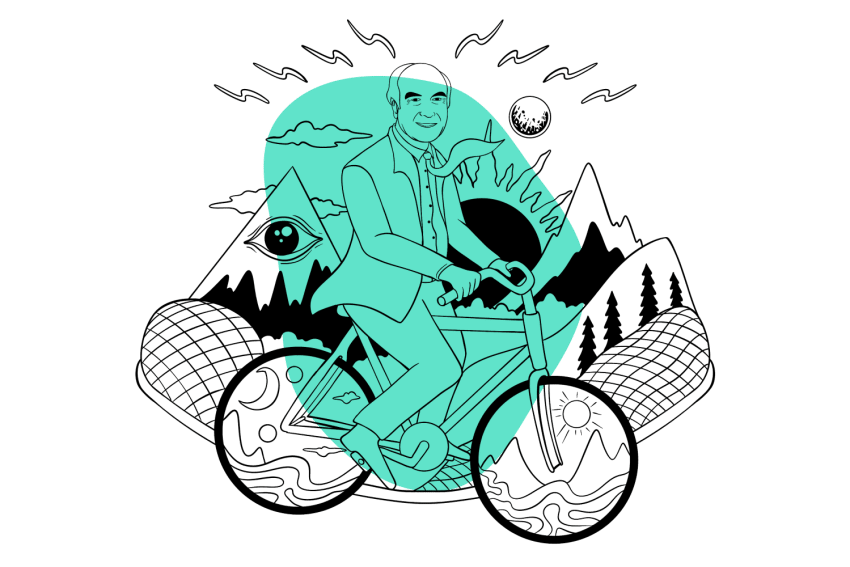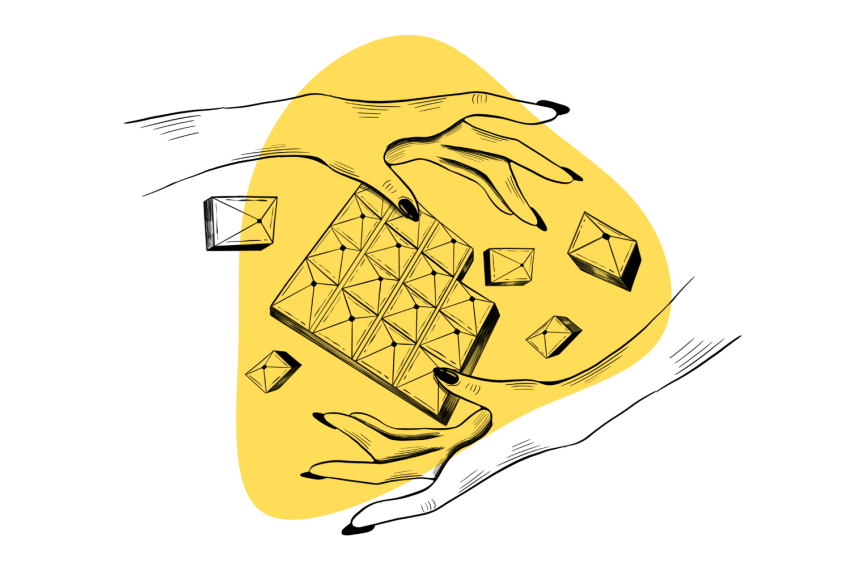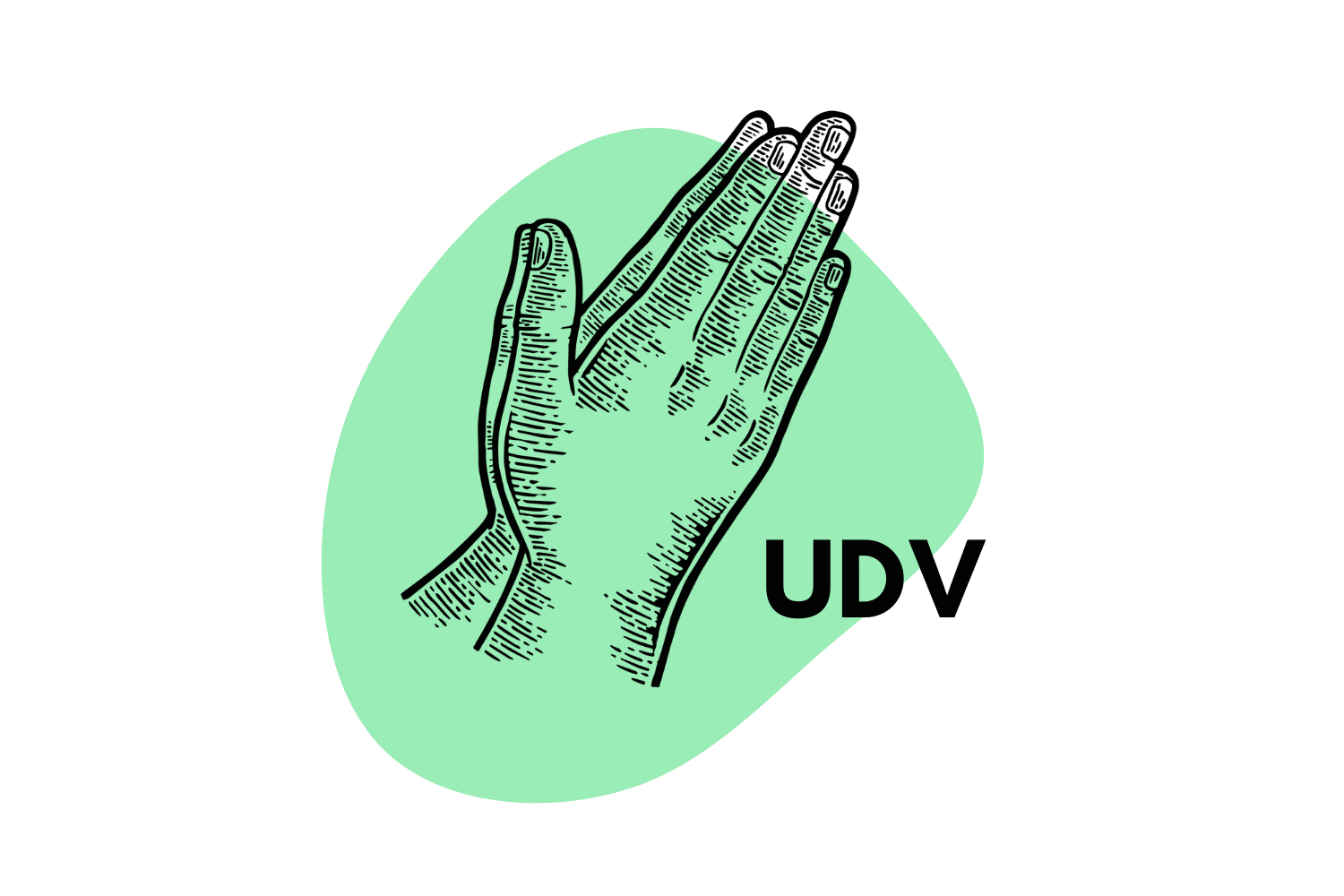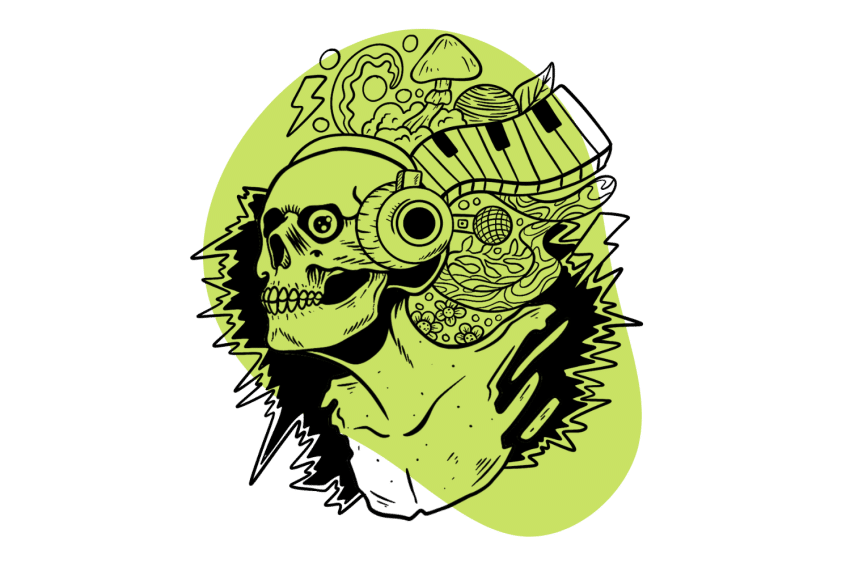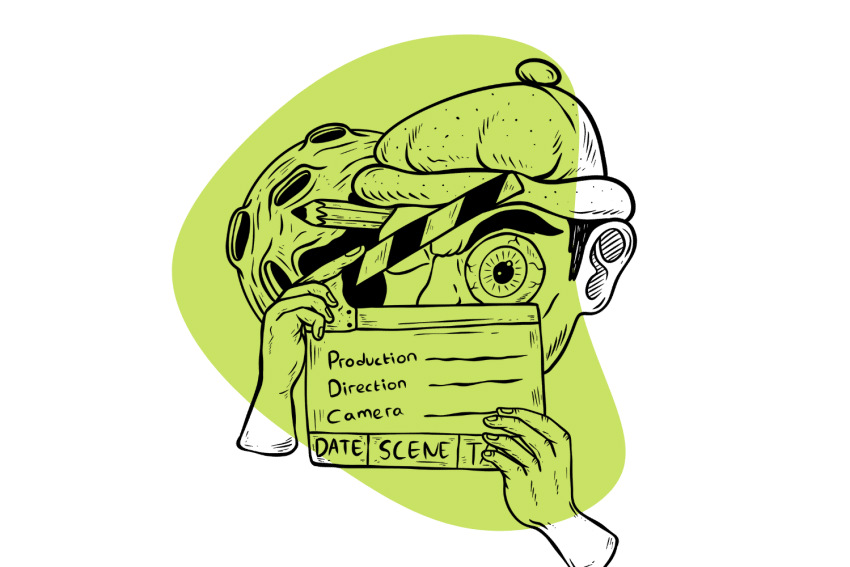How AI Is Revolutionizing Psychedelic Science
AI is being used to discover new psychedelic molecules at a rate 50,000X faster than ever before. 🤖 The Shulgins would be proud.
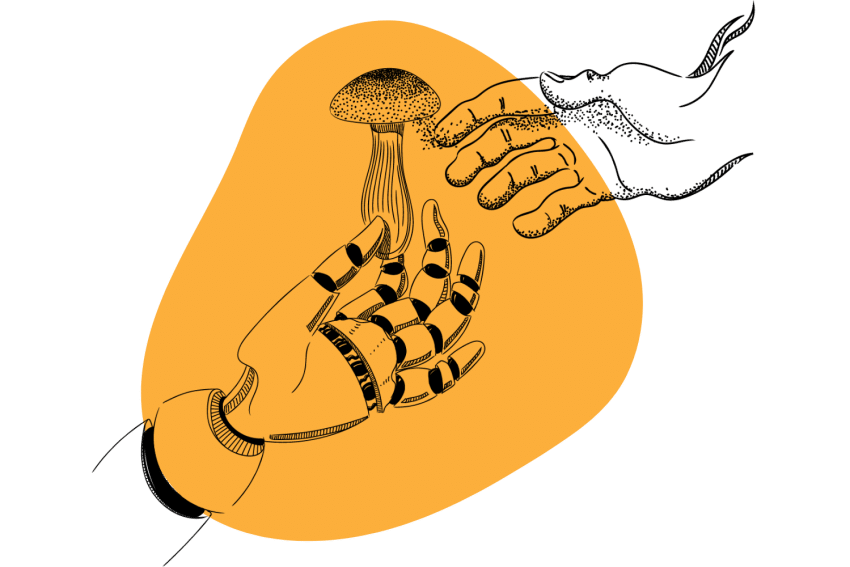
Regardless of your opinion, there is no denying artificial intelligence (AI) will be a game changer in several areas of life.
Depending on the industry you look at — and the applications of the technology — opinions vary wildly on whether this is good or bad.
Within the world of psychedelics, there are at least three main ways AI is stepping in:
- Creation of New Substances — Companies are using AI to mass-produce new forms of psychedelic substances based on existing ones.
- Understanding the Subjective Psychedelic Experience — Researchers are using AI to map out the effects of psychedelics. One team is even recreating the visual effects of DMT through an algorithm.
- Developing a Standard for Psychedelics — AI correlates thousands of previous studies and their results to find out which patterns have the most significant impact.
As time goes on, researchers are sure to find new uses for AI in the world of psychedelics. Let’s take a look at each of these current areas of study in detail and consider where they may lead us in the future.
Using AI to Create New Psychedelics
AI can create new molecules — something which often takes humans years — in moments. AI is in a league of its own due to its ability to sift through databases of information on the human body, how it reacts to molecules, and how similar ones or slight alterations might be possible.
Multiple companies have already sprung into existence utilizing this option. One such company, Enveric Biosciences, boasts hundreds of proprietary molecules, adding:
By utilizing its artificial intelligence platform, PsyAI™, Enveric has been able to optimize its discovery efforts and narrow down the potential compound variations in order to select the best candidate molecules for specific mental health indications or physical ailments.
For a computer program, putting together a new molecule is about as difficult as stacking Lincoln logs is for us (not very). Machines can piece together a molecule reliably and quickly, without lapses in understanding, forgotten information, or emotions. It then predicts psychoactivity at various receptors based on the immense amount of receptor affinity data already available in databases like PubMed.
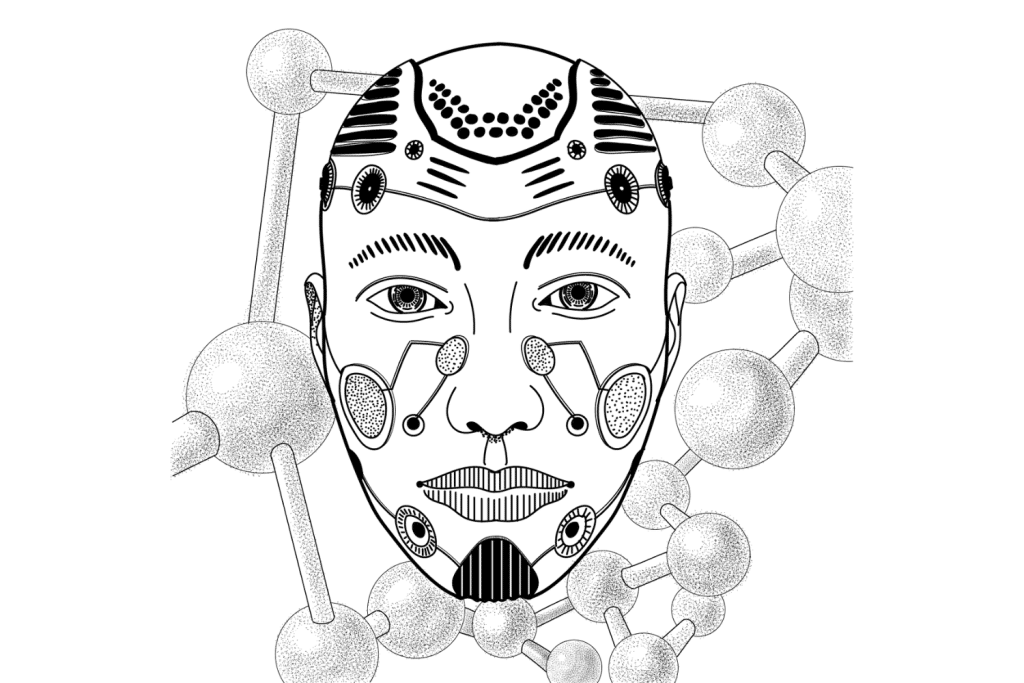
Whether it’s effective or not is up to us, but this takes a large burden off of drug development. AI can churn out a “short-list” of several thousand chemicals, which can then be assayed (either in vitro or via animal testing) to determine which ones are actually psychoactive.
The Darkside of AI Drug Development
While drastically cutting down on the amount of time it takes to develop new molecules, many of these come from the simple desire to create novel, patentable compounds. Enveric’s “Psybrary™” contains hundreds of molecules the company holds a patent on, for example.
Most of this work seeks to improve upon molecules that have already been around for hundreds, sometimes thousands, of years. Researchers may want to reduce side effects, increase potency, or create different effects depending on the goal.
Others are virtually identical to naturally-occurring psilocybin or psilocin — the active ingredients in magic mushrooms. Holding a patent on a form of psilocin puts a company in the running to produce, license, and/or provide it to clinics if legalization ever comes around.
Patents offer the potential for profit, but the mushroom itself is hard to top. Most companies are racing to find an option with a benefit over psychedelic mushrooms before legalization comes into effect.

Once the mushroom is free for people to consume, it’s hard to see the point in using a synthetic (proprietary) prodrug with identical effects. Mushrooms are easy to grow and reliably produce significant amounts of psilocybin — the lengthy lab process would seem absurd, comparatively.
Not only does the perfect form of psilocybin already exist in nature, but a fantastic synthetic replacement — 4-AcO-DMT — is readily available in the gray market. As such, these companies have their work cut out for them.
The companies in this space are all racing against the same clock and likely have plans in place to pivot if legalization comes sooner than anticipated.
There’s also the issue that AI drug development can also be used to discover new chemical weapons — but that’s a topic for another discussion.
The Future of Using AI to Develop Molecules
Some researchers suggest that properly harnessing this capability could provide the starting point for a bright future of using AI to tailor drugs to each specific condition/patient [1]. While it’s far from the place to do so, the dream is of a future program creating novel drugs on an as-needed basis.
Doing so can improve the efficacy of treatment and better anticipate outcomes. Plus, going to a doctor with a litany of problems and receiving a single pill for all of them sounds like a cool sci-fi subplot.
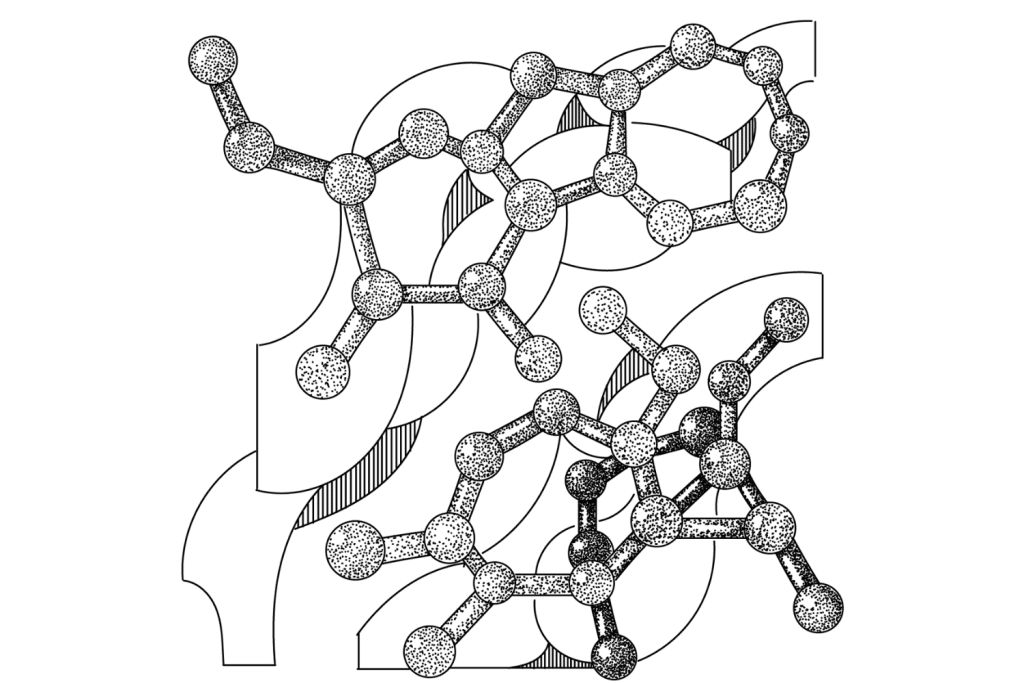
Several challenges are currently in the way of achieving this, and it’s still unclear if there’s a path forward for this practice at all.
As more places start decriminalizing and legalizing psychedelics, much of the market will likely fall off. Most will find very little use in developing novel forms of psychedelics after the real thing is open and available for all.
A scientist wishing to lengthen the psychedelic trip must contend that Iboga creates a natural substance (ibogaine) with an 18–36-hour duration. One desiring to create better visuals has to top the natural drug DMT (dimethyltryptamine), which users describe as “transporting them to other dimensions,” where sightings of interdimensional beings known colloquially as “machine elves” are staggeringly common.
Even our current synthetic psychedelics — LSD (lysergic acid diethylamide) was discovered 60 years ago, and MDMA over 100 years ago. Both are already impressively dominating.
Using AI to Understand the Psychedelic Experience
Two scientists out of Lisbon have taken up the task of recreating the psychedelic experience on AI models. Using two separate neural networks — or complicated webs of algorithms and databases — Drs. Schartner and Timmermann recreated the DMT visual experience [2].
By evaluating these networks, scientists may work backward to understand how the visual effect happens to us. The below image from the report shows how the algorithm handles the distortion (a), how it might happen in our brains (b), and the photo output from the program (c):
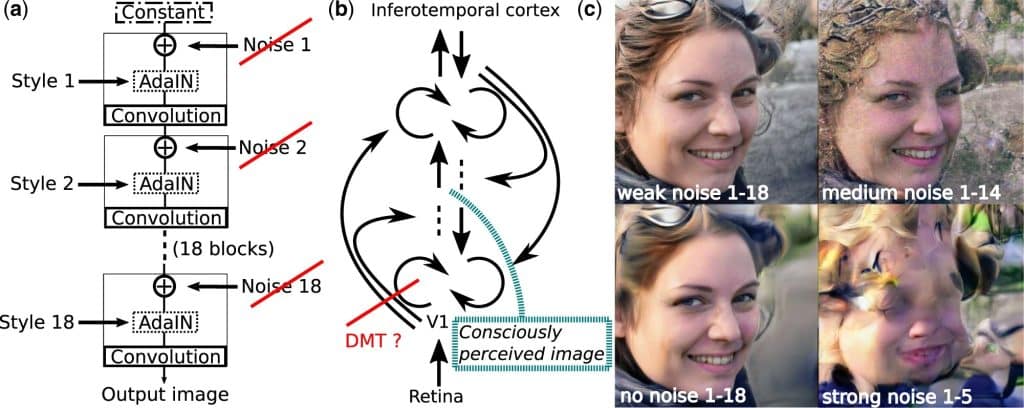
Besides theorizing the mechanism of subjective effects, this can help us understand what happens. As the researchers report:
Our second model, the style-transfer network architecture, allows us to depict nearly any report of a visual hallucination – assuming one can find a matching content and style image.”
AI may help recreate the experience of psychedelics. Consider the possibility of taking your 15-minute DMT trip and recreating it into an image or video you can ponder for hours.
How Reliable is Using AI to Recreate the Psychedelic Experience?
As the image makes clear, we’re a long way from completely showing what the subjective effects of psychedelics look like or how they work. Aside from our current shortcomings with AI and using still images, there are bodily effects and thought processes to consider.
AI is an exciting development and brings a lot of potential, but there is still plenty of distance to cover. Hopefully, this can develop into a robust set of technological tools to boost the psychedelic substances we take.
Using AI to Standardize the Psychedelic Experience
Perhaps one of the most extensive undertakings in psychedelic research with AI is the paper by Drs. Ballentine, Friedman, and Bzdok. This report pairs scientific research with anecdotal reports from a naturalized setting.
After compiling nearly 7,000 trip reports from Erowid, researchers broke testimonials down word by word and created a database [3].
In doing so, they accomplished two significant feats:
- Compare subjective experiences across psychedelics in a naturalized setting without researcher influence.
- Pair these emotions and experiences with current knowledge of molecular action.
Both open up interesting potential avenues for the future of psychedelics and AI. They also both have potential downsides worth considering.
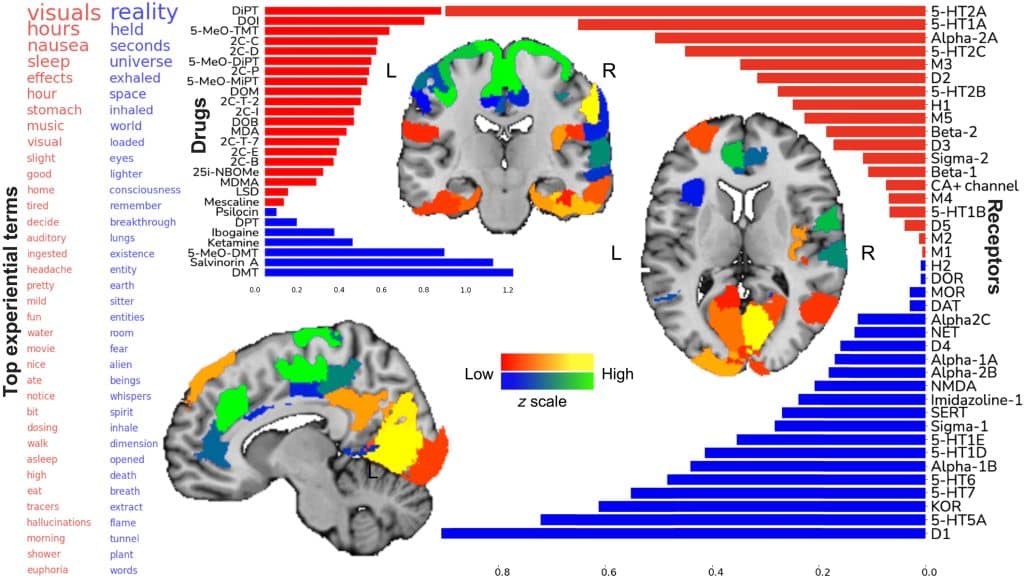
AI Can Analyze Thousands of Psychedelic Trip Reports in Minutes
In moments, algorithms can sort, categorize, and examine thousands of data points to see what they have in common. The perfect form of this database could assist in deciding which psychedelic is best for each patient.
Though several of these drugs exist within the same category, they have drastically different effects. Criminalization has made it so sites like Erowid are the only place budding psychonauts can find any such information.
A database on the typical subjective effects of different drugs could be a valuable tool for harm reduction and clinical reference. Psychedelic experiences largely depend on the mindset of the user and the setting they’re in, but many consider different drugs to have their own themes or “personalities.”
Matching the reported experiences of users with the drug they took could provide key insights we’ve never been able to report on accurately before. Unfortunately, the “mindset” part of the equation often turns expectations into reality, whether it’s related to the drug or not.
As people consider using psilocybin for the first time, they may read several reports on how it helps them feel connected with nature. Then, with that in mind, they enter into the experience and find that it does, in fact, connect them deeply with nature.
Did they feel the connection because the drug brought it on or because they expected to feel it based on the reports they read? We don’t currently have a way to know, and, as a result, neither do AI algorithms.
AI Bridges Maps Drug-Receptor Binding Activity in the Brain
Researchers theorized their effects on the brain by comparing reports from various drugs and the receptors they often communicate with. They could find the receptors that most frequently produced a particular result.
Most notably, it found the locations most commonly associated with the feeling of ego-dissolution — or ego-death.
Through these methods, the researchers suggest targeting the following serotonin receptors:
- 5-HT2A
- 5-HT2C
- 5-HT1A
- 5-HT2B
Along with the adrenergic receptors:
- Alpha-2A
- Beta-2
- D2
AI shows that the culmination of these receptors can reliably induce ego dissolution — which is widely thought of as the most valuable component of the psychedelic experience in the context of improving one’s views on life and death.
Admittedly, this information comes with significant caveats. For starters, all of the data is self-reported by users on the internet, inherently making embellishment more likely.
While the naturalistic setting of the experience is a plus in some senses, it also means participants are taking drugs they source from the clandestine market. Purity, potency, and dosage are not possible to guarantee for any of the reports this study uses.
AI Improves Standardization of Psychedelic Therapy
Harnessing the raw processing potential of AI to understand better the similarities and differences we share in our psychedelic experience could be huge.
These algorithms can quickly sort through decades’ worth of clinical trials and case reports to pinpoint which patterns had the biggest impact. This data can then be used when determining various procedures during the session.
As machine learning algorithms grow more robust, this tool will become invaluable to practitioners, lawmakers, and regulatory agencies operating in the psychedelic-assisted psychotherapy space.
How AI Could Revolutionize Psychedelic Therapy
It’s easy to see how psychedelic therapy could benefit from AI, either directly from the programs themselves or indirectly from the key insights they bring about.
Getting to a place where we’re doing everything we can with AI and psychedelics will take time. After all, we still have to develop AI in many ways.
Still, a future is currently at least feasible where psychedelic clinicians might:
- Personalize medical care by creating substances addressing the specific needs of each client.
- Recreate and revisit the psychedelic experience with their client, referencing moments, feelings, and thoughts after the fact.
- Target specific receptors to turn anticipation of the experience into certainty and reliably predict outcomes.
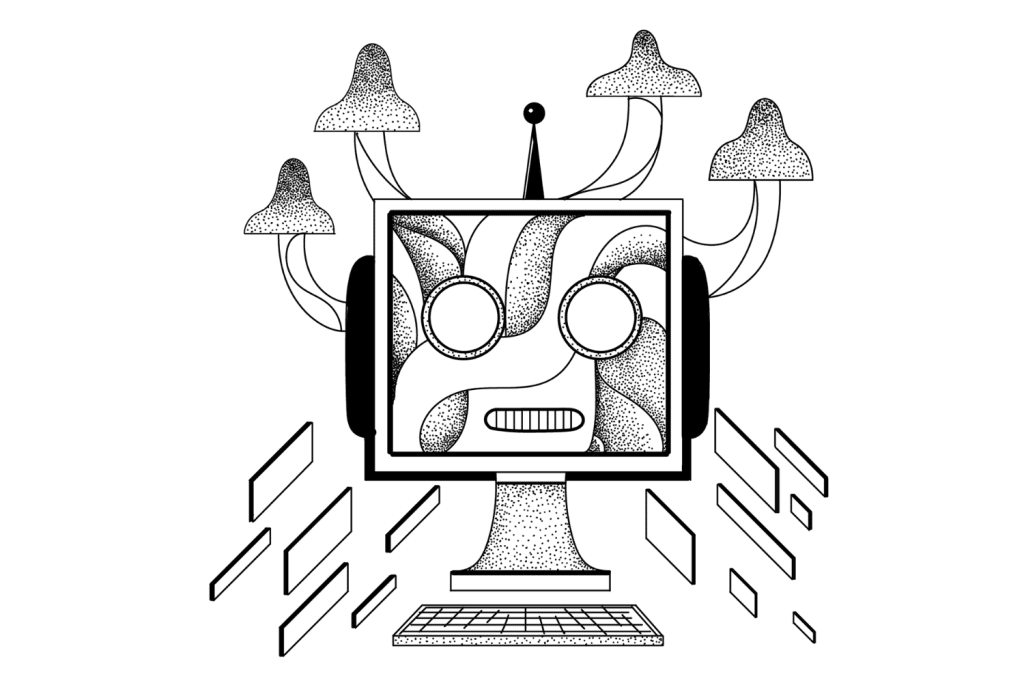
And that’s just from what we’re working on currently. As time goes on, there’s no telling the many ways we’ll start to explore this technology and what it can do for us.
Psychedelics and AI: Frequently Asked Questions
Here are some questions people frequently ask regarding AI and psychedelics:
Can AI Create Stronger Forms of Psychedelics?
It’s possible, but it has yet to happen. As humans — not to mention the accomplishments of nature — we’ve created some pretty powerful drugs. So the bar for creating stronger psychedelics is exceptionally high.
Today, the majority of uses for AI and psychedelics revolve around creating similar prodrugs of existing psychedelics or altering a specific facet of their function. For example, some companies are attempting to develop psychedelics with fewer side effects, a shorter or longer duration, or forms with longer shelf lives.
We often compete with nature, trying to do what nature has already done with compounds like DMT or Dr. Hoffman’s original LSD.
Can AI be Useful for Medicine?
AI has several potential applications for the world of medicine, from creating novel drugs to better predict outcomes. With access to vast swaths of data, personal history, and knowledge, AI may one day reliably diagnose and treat several symptoms.
Can AI Experience a Psychedelic Trip?
Researchers reliably got an AI algorithm to recreate the visuals of a DMT trip, but can AI experience a trip of its own? Not according to Chat GPT.

Altered consciousness first requires a consciousness to alter. Artificial intelligence is currently our best effort at collecting and utilizing the knowledge humanity already has. It is not a consciousness on its own but, rather, a reflection of ours.
As time goes on, we may develop systems sophisticated enough to participate in the psychedelic experience.
References
- Paul, D., Sanap, G., Shenoy, S., Kalyane, D., Kalia, K., & Tekade, R. K. (2021). Artificial intelligence in drug discovery and development. Drug discovery today, 26(1), 80.
- Schartner, M. M., & Timmermann, C. (2020). Neural network models for DMT-induced visual hallucinations. Neuroscience of Consciousness, 2020(1), niaa024.
- Ballentine, G., Friedman, S. F., & Bzdok, D. (2022). Trips and neurotransmitters: Discovering principled patterns across 6850 hallucinogenic experiences. Science Advances, 8(11), eabl6989.


